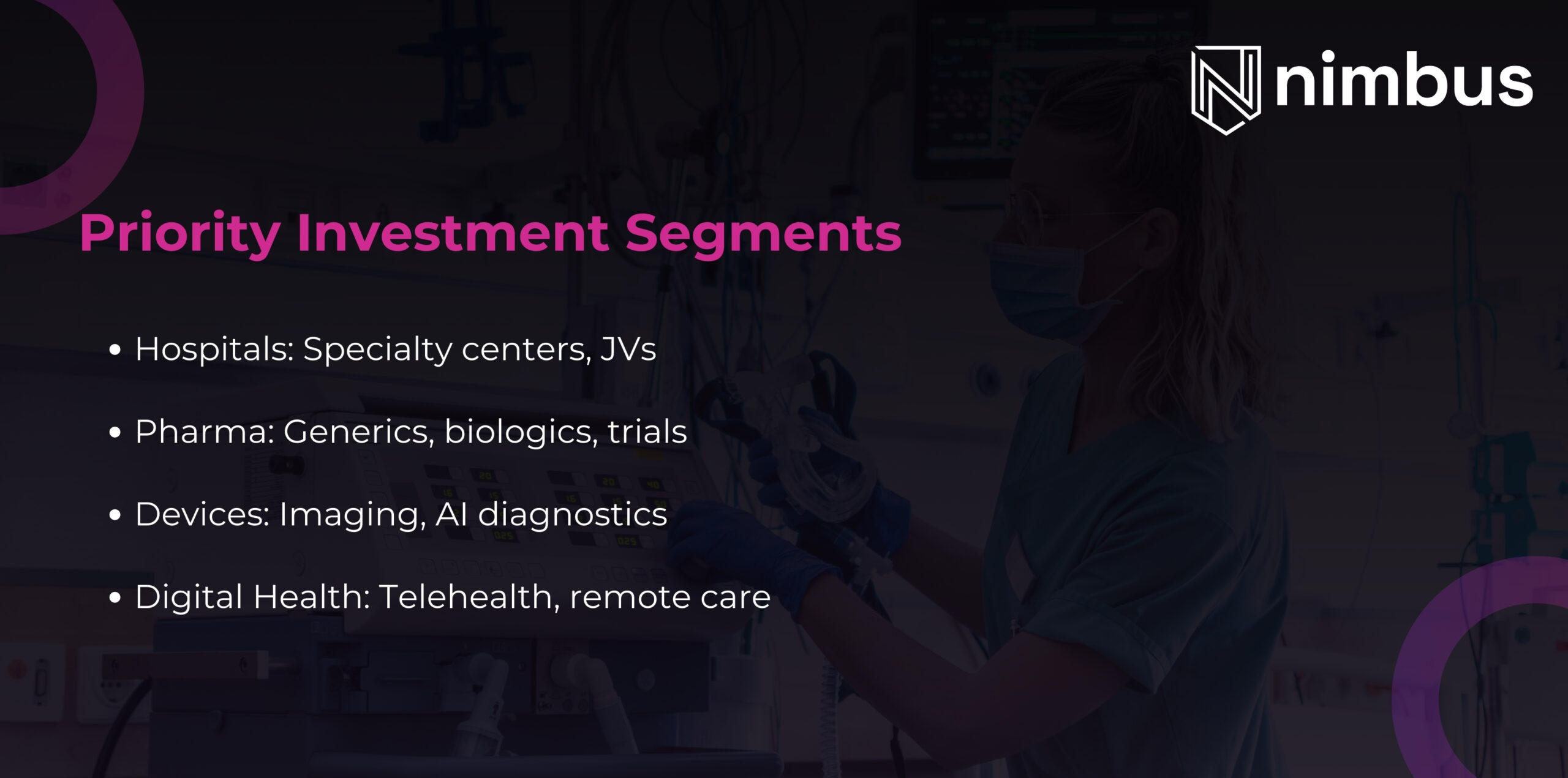The UAE is steadily establishing itself as one of the most dynamic healthcare markets in the Gulf region. With strong government backing, rising demand for advanced medical services, and a strong aim to attract international investors via business setup in the UAE, this placce has become a hotspot for healthcare businesses seeking long-term growth.
Healthcare spending per capita in the UAE is already among the highest globally at around US$1,200, and the market generates over US$4.6 billion in annual revenues.
Forecasts from 2019 to 2023 showed a compound annual growth rate of nearly 10 percent, and the momentum continues with significant investments across hospitals, pharmaceuticals, medical devices, and digital health.
For foreign businesses and investors, the UAE offers a unique mix of opportunities, immediate demand in some areas and long-term potential in others. Let’s explore more in this post.
1. Overview of the UAE Healthcare Market
The UAE healthcare sector has become a vital part of the country’s economy. Demand is fueled by population growth, an increase in chronic lifestyle-related conditions, and a surge in medical tourism.
Dubai, in particular, stands out as a regional hub for healthcare delivery, innovation, and international patient inflows. The system is well supported by a diverse insurance base, with 75 providers offering more than 12,000 policies.
This comprehensive coverage ensures sustained demand for medical services across preventive care, specialized treatments, and elective procedures. Both the public and private sectors continue to expand capacity, modernize infrastructure, and bring in cutting-edge technologies.
For international businesses, this creates a market that is not just large and well-funded but also forward-looking in terms of innovation and regulatory frameworks.
2. Key Growth Drivers
Several factors are pushing the UAE healthcare market into a new growth phase:

- Population growth and higher life expectancy
- Rising prevalence of chronic conditions such as diabetes and cardiovascular diseases
- Strong government investment in infrastructure and modernization
- Ambitious medical tourism programs in Dubai and Abu Dhabi
- A shift towards advanced technology, digital health, and precision medicine
These drivers underline why the UAE is attracting both global healthcare operators and specialized investors looking for a foothold in the region.
3. Investment Opportunities in Pharmaceuticals and Medical Devices
Pharmaceuticals and medical devices are two of the most attractive and accessible entry points for foreign businesses. The UAE is actively transitioning from being an importer to becoming a regional hub for manufacturing and research.
Dubai has targeted US$2.5 billion in pharmaceutical research and manufacturing investment, while Abu Dhabi has launched sovereign-backed initiatives to grow its pharma and biotech industries. By the end of 2025, the UAE medical-device market is expected to reach around AED 5.6 billion (approximately US$1.5 billion).
Hospitals are upgrading equipment, diagnostic capacity is expanding, and demand for advanced imaging and AI-based platforms is on the rise. Investors can explore opportunities across:
- Biopharmaceuticals and generics with shorter supply chains and faster market entry.
- High-tech diagnostic platforms such as imaging, point-of-care, and AI-augmented tools.
- Contract research organizations (CROs) and clinical-trial infrastructure.
- Innovative therapies and biotech start-ups with sovereign capital and university support.
For companies willing to make long-term bets, pharmaceuticals and biotech manufacturing offer strategic upside, while devices and diagnostics provide near-term revenue stability.
4. Regulatory and Market Access
Healthcare regulation in the UAE operates at both federal and emirate levels. The Ministry of Health and Prevention (MOHAP) oversees medicine and device registration, while entities such as the Dubai Health Authority (DHA) and Abu Dhabi Department of Health (DoH) manage local facility licensing and approvals.
The system is increasingly digitalized, but foreign entrants are required to have a local representative, marketing authorization holder, and compliance with MOHAP standards.
Many international companies reduce friction by entering through distribution agreements, licensing arrangements, or free-zone manufacturing setups. For investors, budgeting for registration timelines and local legal expertise is a practical necessity when calculating return on investment.
5. Technological Transformation
Technology is at the center of the UAE’s healthcare evolution. Dubai and Abu Dhabi have positioned themselves as testbeds for health-tech, scaling pilots into full-fledged programs across telemedicine, AI, robotics, and genomics. Examples of innovation include:
- 3D printing for surgical planning and prosthetics
- Robotic pharmacies and automated dispensing systems
- National patient record digitization and telemedicine platforms
- Consumer apps for chronic disease management
- Smart-fitness platforms integrated into healthcare systems
Government reimbursement of virtual consultations and active adoption of robotics in hospitals highlight the UAE’s openness to new technologies. For global health-tech companies, the UAE offers a well-funded and regulated environment to trial and scale solutions.
6. Human Capital and Workforce Trends
One of the critical enablers of the UAE’s healthcare vision is its human capital strategy. Universities such as Mohammed Bin Rashid University of Medicine and Health Sciences are expanding research and clinical training programs, while national policies encourage the recruitment of international talent.
Gender balance and women-in-STEM initiatives are also strengthening the talent pool, making the UAE unique in the region for its focus on inclusivity in healthcare and technology.
Visa reforms, higher salaries, and continuous professional development programs have improved the availability of skilled professionals, reducing staffing bottlenecks for foreign projects. For investors, this means easier access to qualified teams for R&D, clinical trials, and operations.
7. Priority Investment Segments
For foreign investors, the UAE offers a range of opportunities for company formation in the UAE across its healthcare ecosystem. Key opportunities include:

- Hospitals and Clinics: Specialty centers, greenfield projects, outpatient chains, and joint ventures for oncology, cardiology, and orthopedics.
- Pharmaceuticals and Biotech: Generics, biologics, contract manufacturing, and clinical-trial infrastructure supported by industrialization programs.
- Medical Devices and Diagnostics: Imaging, lab automation, AI-based diagnostics, and regional distribution hubs serving GCC and East Africa.
- Digital Health and Telemedicine: Remote monitoring, AI analytics, telehealth platforms, and consumer health apps with strong government adoption.
8. Practical Takeaways for Foreign Investors
To succeed in the UAE healthcare market, businesses should:
- Partner locally through joint ventures, management contracts, or distribution deals to navigate regulatory systems.
- Align with national programs like Operation 300bn, the In-Country Value program, and sovereign initiatives to access incentives.
- Bundle services such as training, maintenance, and consumables to strengthen value propositions.
- Anticipate regulatory timelines and allocate resources for compliance and approvals.
The UAE is becoming a regional hub for advanced medicine, research, manufacturing, and digital health innovation. With government support, high healthcare spending, and a clear focus on future-ready systems, the market is primed for international investment.
For businesses and investors, the business setup opportunities extend across near-term demand for devices and diagnostics, medium-term returns from hospitals and specialty care, and long-term strategic growth in pharmaceuticals, biotech, and digital health.



